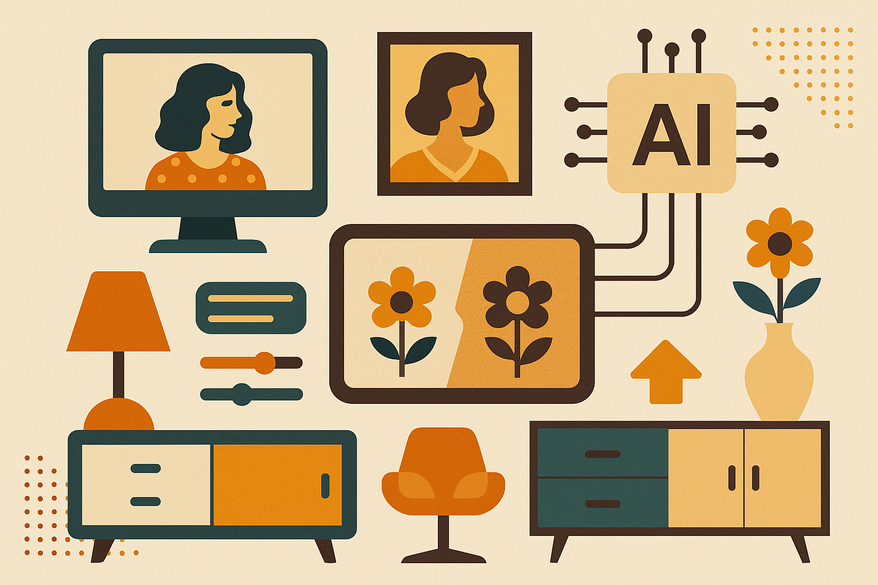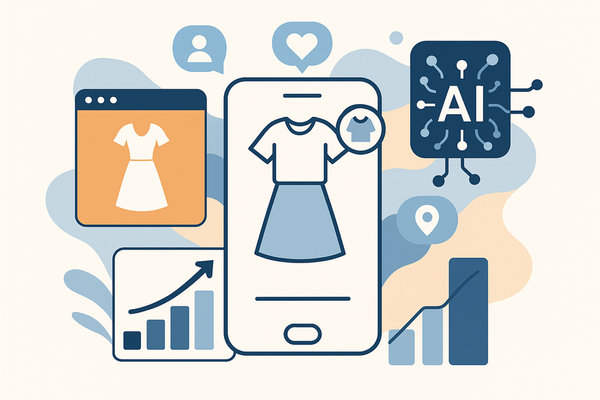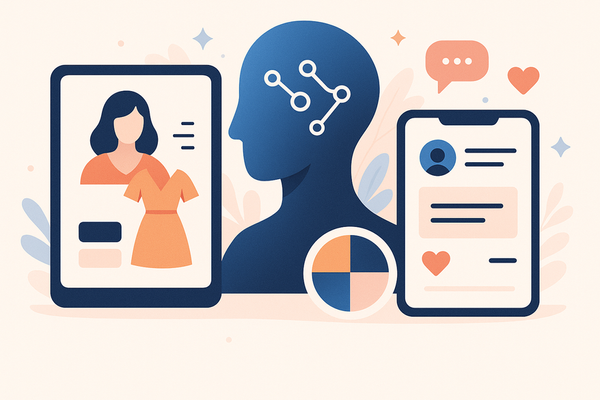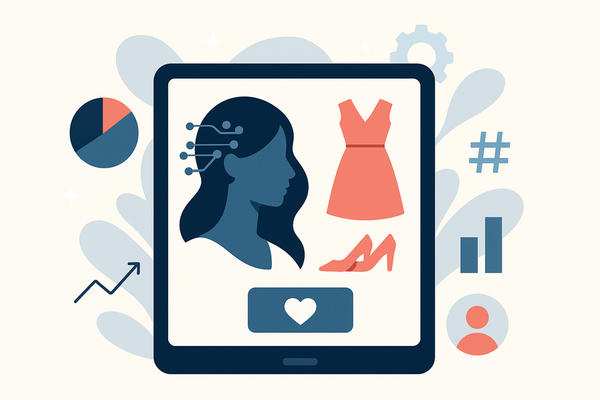How to Achieve a Retro Style Makeover with AI
Discover AI-driven techniques to achieve a retro style makeover using vintage filters and personalized engines for unique fashion and décor transformations.

7 min read
Key Takeaways
- AI-powered tools make vintage fashion and décor accessible to everyone.
- Follow a step-by-step process to transform photos, outfits, or rooms with classic flair.
- Enjoy time savings, personalized nostalgia, and sustainable previews.
- Explore future trends like AR try-ons and generative retro designs.
Table of Contents
- Introduction
- Understanding Retro Style
- The Role of AI in Fashion and Wardrobe Curation
- Integrating AI into a Retro Style Makeover
- Benefits of a Retro Style Makeover with AI
- Practical Tips for Implementing AI in Your Retro Makeover
- Future Trends in Retro Style and AI Fashion
- Conclusion
- FAQ
Introduction
The surge of nostalgia in digital self-expression has transformed how we share our style. Today’s apps let anyone pull vintage vibes into photos, outfits, or home décor. A retro style makeover with AI means using smart tools to give your look or space classic flair from past decades, all powered by machine learning precision.
For an AI-powered deep dive into your vintage makeover—and more personalized beauty insights—check out Maxx Report.
Understanding Retro Style
The retro style makeover with AI starts by knowing what made past decades unique. Vintage fashion and décor from the 1920s through the 1990s left a mark on patterns, colors, fabrics, and shapes.
Historical Context
- 1920s flapper dresses with beaded fringe and dropped waists.
- 1960s mod gear: bold geometrics, mini skirts, go-go boots.
- 1970s boho: earth tones, wide-legged trousers, patchwork.
- 1980s neon and power suits: shoulder pads, metallics.
- 1990s grunge: layered plaid, distressed jeans, Doc Martens.
Key Characteristics
- Patterns: Geometrics, polka dots, psychedelic florals.
- Colors: Earthy browns, burnt orange, neon pastels.
- Fabrics: Polyester, corduroy, silk blends.
- Silhouettes: A-line skirts, flare pants, padded shoulders.
Role of Nostalgia
Nostalgia means a warm longing for days gone by. It taps into deep feelings—comfort, identity, fun—and makes retro styling so powerful. AI can harness that emotion, matching your personal taste to era-specific cues.
The Role of AI in Fashion and Wardrobe Curation
Retro style makeover with AI relies on smart algorithms that learn from millions of images and sales figures.
AI Applications Overview
- Trend Forecasting – Machine learning scans social feeds and retail data to predict next season’s hot looks. For a deeper dive, see our AI style trend predictions guide.
- Visual Search – Snap a picture and AI finds matching or vintage items online.
- Automated Outfit Assembly – AI builds daily looks using your wardrobe uploads, mixing retro and modern pieces.
Personalized Style Recommendations
AI starts by building your style profile. It looks at body shape, color preferences, and past purchases. Then it suggests retro outfits—like a ’70s floral blouse paired with today’s high-waist jeans—that flatter you best.
Bridging Past & Present
Historic fashion databases guide AI to adapt 1960s–1990s themes into modern sizing, material tech, and climate needs. Your AI-powered retro style still works for today’s world.
Integrating AI into a Retro Style Makeover
Step-by-Step Guide
- Select your AI tool for a retro style makeover with AI:
- Epik app for 1990s yearbook portraits.
- Lemon8 for 1980s neon accents.
- Fotor vintage filters for film grain.
- HomeDesignsAI for mid-century modern rooms.
- Upload your photo, wardrobe inventory, or room layout.
- Choose your decade: ’60s mod, ’70s boho, ’80s electric, or ’90s grunge.
- Fine-tune effects: adjust color temperature, grain intensity, contrast, silhouette curves.
- Save and share: download your AI-enhanced look or décor plan.
Case Studies
- Viral AI yearbook portraits show true ’90s “high school” photo quality in minutes.
- HomeDesignsAI turned a plain living room into a mid-century lounge with teak furniture and retro wallpaper.
Benefits of a Retro Style Makeover with AI
- Saves hours of searching by instantly curating looks or room designs.
- Personalized nostalgia: AI blends your body or space specifics with decades-old charm.
- Sustainability: Preview outfits or layouts to revive existing pieces and reduce waste.
- Enhanced creativity: Experiment with eras you’ve never tried before.
Practical Tips for Implementing AI in Your Retro Makeover
- Start with a quiz or survey to pinpoint your favorite era.
- Curate balance: Pair one statement vintage piece with modern basics. Let AI suggest items, then vet for fit and comfort.
- Fine-tuning: If results feel off, adjust hue, saturation, or silhouette settings manually. Try multiple filters for best fit.
- Cross-reference inspiration: Keep a mood board of authentic era images to guide AI choices.
Future Trends in Retro Style and AI Fashion
- Hyper-Personalization: Future AI may use DNA or biometric data to craft unique retro looks.
- AR Try-Ons: Mobile apps and smart mirrors will overlay vintage outfits live.
- Generative Design: AI will create new retro-inspired garments and furniture by blending era hallmarks with next-gen materials.
Conclusion
A retro style makeover with AI reimagines vintage fashion and décor through modern algorithms. It offers efficient curation, custom nostalgia, and eco-friendly previews. From quick photo filters to full room redesigns, AI democratizes classic charm for everyone. Ready to step back in time? Pick an AI tool today, share your retro transformations, and join the vintage revival.
FAQ
- What is a retro style makeover with AI?
It’s the use of artificial intelligence tools to apply vintage filters, curate era-specific outfits, or redesign rooms with classic aesthetics from the 1920s to 1990s. - Which AI tools work best for retro styling?
Popular options include Epik for ’90s portraits, Lemon8 for neon ’80s looks, Fotor for film-grain filters, and HomeDesignsAI for mid-century décor. - How can I fine-tune AI results?
Adjust settings like color temperature, grain, contrast, and silhouette curves. Use a mood board of authentic era images to guide choices. - Is AI-driven retro styling sustainable?
Yes—by previewing layouts and outfits digitally, you can repurpose existing pieces, avoid overbuying, and reduce waste.





